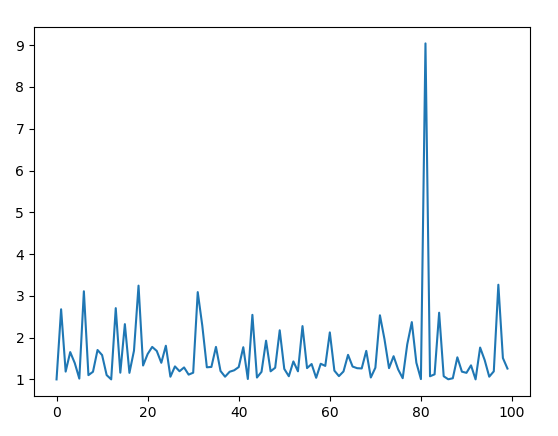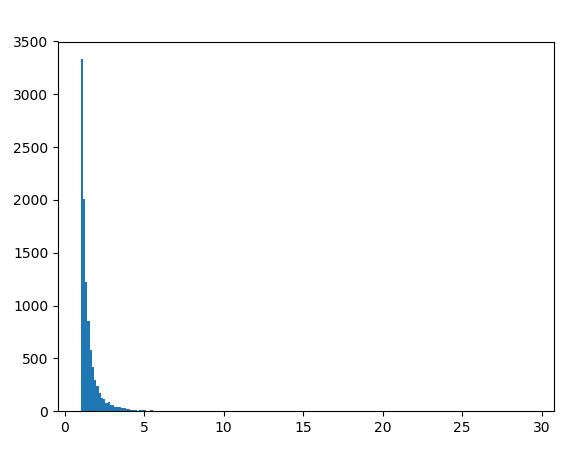random.paretovariate() function in Python
Last Updated :
26 May, 2020
random module is used to generate random numbers in Python. Not actually random, rather this is used to generate pseudo-random numbers. That implies that these randomly generated numbers can be determined.
random.paretovariate()
paretovariate() is an inbuilt method of the random module. It is used to return a random floating point number with Pareto distribution.
Syntax : random.paretovariate(alpha)
Parameter :
alpha : shape parameter
Returns : a random Pareto distribution floating number
Example 1:
import random
alpha = 3
print(random.paretovariate(alpha))
|
Output :
1.0333528834896462
Example 2: We can generate the number multiple times and plot a graph to observe the Pareto distribution.
import random
import matplotlib.pyplot as plt
nums = []
alpha = 3
for i in range(100):
temp = random.paretovariate(alpha)
nums.append(temp)
plt.plot(nums)
plt.show()
|
Output :

Example 3: We can create a histogram to observe the density of the Pareto distribution.
import random
import matplotlib.pyplot as plt
nums = []
alpha = 3
for i in range(10000):
temp = random.paretovariate(alpha)
nums.append(temp)
plt.hist(nums, bins = 200)
plt.show()
|
Output :

Like Article
Suggest improvement
Share your thoughts in the comments
Please Login to comment...